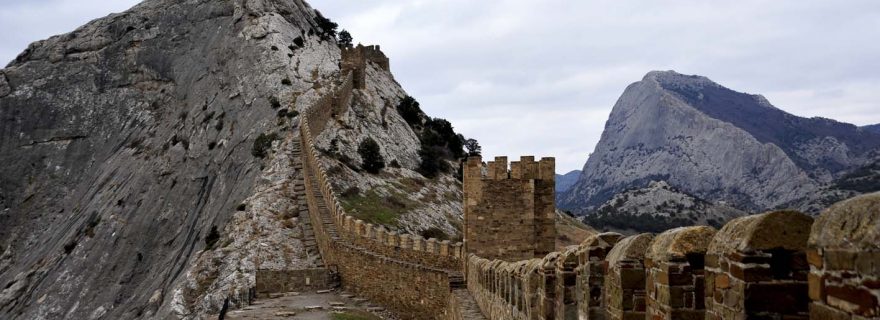Should historians serve the nation?
If we want to understand the dynamics of the Golden Horde, we need to disregard national borders.
To disregard contemporary borders is the only way to understand the relations that integrated peoples in the past. Until today, the perception of peoples’ history remains complex when it calls into question too often assumed notions of border and nation.
It is essential to remember that borders were not always where we see them today. State frontiers are never inherently natural; they are the manifestations of politics. One of the major commitments of historians is to write the histories of fluid spaces of exchange which only recently have been cut into strictly bordered spaces.
One such history is that of the Golden Horde which succeeded the Mongolian empire founded by Genghis Khan. Originating in the thirteenth century, it lasted for three hundred years. It was multi-ethnic, multi-religious and multi-cultural. As nomadic elites converted to Islam, the Horde became a major hub of the Islamic world. During this flourishing epoch, cities and villages burgeoned on the banks of the Volga, attracting wandering scholars and craftsmen from Anatolia, Central-Asia and Egypt.
“Horde” comes from the Mongol orda, a dual term signifying both the place and the people of the nomadic encampment. Yellow was the colour of imperial power, recalling the gold leaf that covered the throne of the ruler and his magnificent tent. The Horde encompassed the steppes where the nomads managed huge herds of cattle, camels and horses. It was also a very active commercial centre where the sedentary subjects and neighbours came to trade. The scope of the Horde’s influence went far beyond its frontiers. It is thus not by chance that the term permeated Russian, Arabic, Persian and all European languages from the time of Genghis Khan’s conquests.
On maps depicting the medieval era, the Golden Horde stretches from Lake Balkhash to the Black Sea, a region that nowadays has no political consistency as it is currently split between Russia (including Tatarstan and Crimea), Ukraine, Bulgaria, Moldavia, Azerbaijan, Georgia, Kazakhstan, Uzbekistan and Turkmenistan.
None of these modern nation-states can singularly claim the Horde’s territorial legacy without overflowing into the territories of neighboring nations. This fact makes the Horde improbable to fit the history of the Golden Horde with national teleologies, and much less manageable for scholarly circles grounded by modern national borders. This explains why it has been ill-studied for so long or simply erased from school text books.
National historiographies are inclined to distort history, to create and disseminate self-serving clichés. The first task of historians is to debunk such tropes, and to avoid inaccurate terminology such as “the Tatar Yoke”, in order to encourage inquiries into more important questions: how to deal with the notion of a collective history when it crosses the borders of modern nations? What then is the legacy of such an entity as the Golden Horde?
The modern Tatars and other Muslim peoples now living in the Russian Federation consider the Golden Horde a key formative period in their history. Their narratives of origin go back to the time when the Horde’s rulers converted to Islam. Indeed, the islamization of the Eurasian steppes, Crimea and Eastern Europe is one of the Golden Horde’s most important legacies. It meant that diverse communities accepted rules, practices, and social rituals that allowed them to live together. It was a unifying force and a vehicle of social integration.
The Golden Horde is thus constituent of the collective past of the Ukrainians, Russians, Tatars, and others, when they were once under the administration of Genghis Khan’s descendants.
The Crimean Tatars are a case in point. During the Soviet Union, they had to fight to exist despite forced migrations and the interdiction of all forms of political expression. When they were allowed to go back to Crimea in 1989, after decades of exile and silence, the new generations discovered a land that was completely different. Cemeteries were emptied and mosques were erased, making it impossible for them to identify the places to which their families had once belonged. They knew their heritage only through the narratives of their parents.
The task of returning a past to those who have lost theirs rests upon the shoulders of archaeologists and historians, unearthing remains and delving through texts, to elucidate and disseminate knowledge of the cultural past of these areas in which various peoples lived. In doing so, religions are phenomena of great significance for historians as they typically transcend borders
The Golden Horde is only one example among others. The Xiongnu, the Khazars, the Mamluks, or the Comanche, deserve the same interest. Universities have a crucial role to play in expanding and furthering fields of research beyond nationalist agendas. They need to facilitate more international exchanges, especially during periods of diplomatic tensions, if only because historical research is a collective undertaking that crosses borders.
Marie Favereau is member of the research project: Nomadic Empires: A World-Historical Perspective (2014-19).



0 Comments